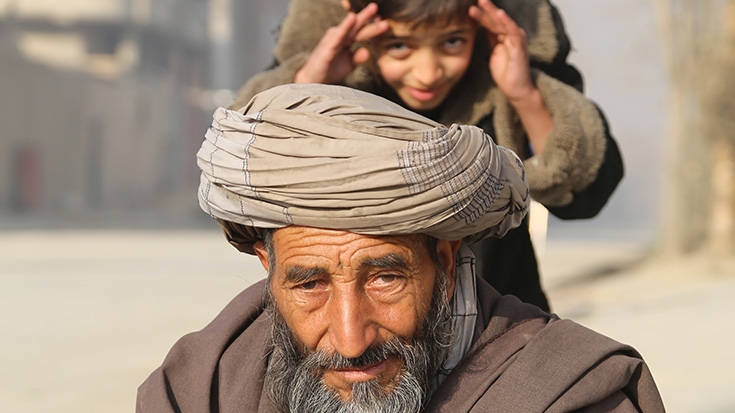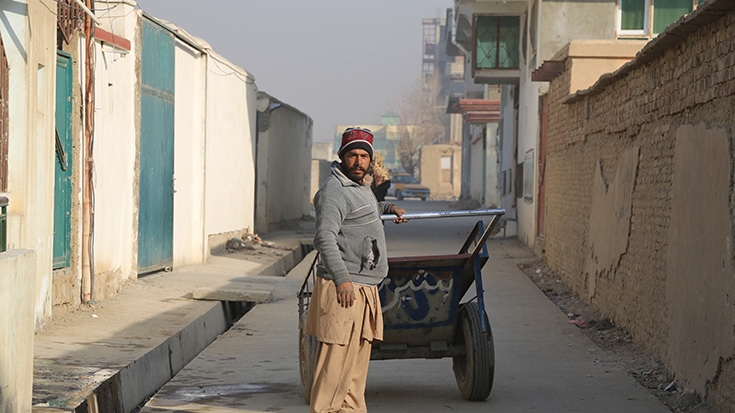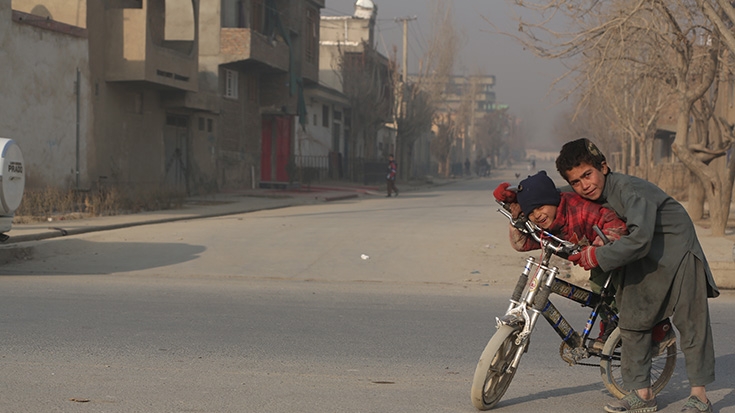The change was brought about by a development project initiated by the Kabul Municipality, with support from the Afghanistan Reconstruction Trust Fund (ARTF), which kicked off in August 2013. In Nowabad, the project was completed in October 2014, leaving behind 20 newly asphalted, expanded streets, and establishing an effective and hygienic water drainage system.
Ghulam Sarwar Khan, 50, head of the neighborhood’s GCS, agrees that the project has been extremely successful. “We used to have lots of problems,” he states. “God bless the Kabul Municipality for taking care of us and asphalting our streets.”
The Kabul Municipal Development Program (KMDP), with $110 million grant support from ARTF, helps the Kabul Municipality improve street conditions in neighborhoods such as the one in Nowabad. KMDP’s objectives are to increase access to basic municipal services in selected residential areas of Kabul City; redesign Kabul Municipality’s Financial Management System to support better service delivery; and enable early response in the event of an eligible emergency.
Equipment for the roads and sanitation departments of Kabul Municipality will combat pollution and improve service delivery as well as the city environment. The program is expected to deliver welfare and human development benefits to over 770,000 people through services provided in some 1,770 hectares of government-owned land. To date, some 427 hectares have been upgraded, reaching almost 25 percent of the targeted area.
KMDP has improved over 87 kilometers (km) of roads and constructed more than 120 kilometers of the drainage system in the targeted area. Construction has led to the creation of nearly 438,000 man-days of temporary employment for Afghans. In Nowabad, a total length of over 5 km of streets has been upgraded and more than 10,000 meters of drains constructed, over an area of 29.8 hectares.
Mohammad Nazir, the design and engineering supervisor of the program, says that roughly $1 million was spent on the Nowabad project, which has benefited about 8,000 people, translating to $33,560 a hectare – 57% of the upgraded area is planned, and 43% of the area is unplanned development.
Roads for all seasons
Winter and spring were the biggest challenge for Nowabad neighborhood residents, but as Ghulam Sarwar points out: “This year, we have nothing to worry about.”
The new roads have contributed to better school attendance. “The road improvements have helped students navigate previously treacherous streets,” says Abdul Rahman, 35, a teacher at Daricha-e-Noor, a local primary school.
“We have about 1,600 students in our school, and they arrived at school with dusty and dirty clothes,” he says. “Often, the younger students did not show up for class when it rained.”
Students are not the only ones to have benefited. Marjan, 24, works with a media organization in Kabul. She says that due to the poor roads, she had a difficult time reaching the staff vehicle waiting along the main road.
“The whole street was always either extremely dusty or covered with water and mud,” she recounts. “Sincerely I felt a sense of shame before my colleagues. They stared at my dusty and muddy trouser legs. But now these challenges are all solved. Now we have proper roads.”
The project has turned the neighborhood around—what was previously an area to be avoided, particularly in winter and spring, has become the envy of the town.



